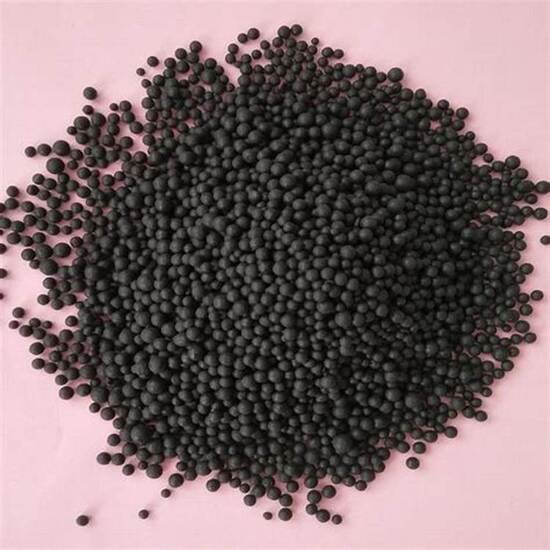Overcoming Acidic Soil: Optimal Strategy to Increase Fertilizer Absorption and Crop Productivity

The importance of understanding soil characteristics in agriculture cannot be underestimated. One of the problems often faced by farmers in various regions, including Indonesia, is acidic soil. Soil with high acidity levels can cause various obstacles in the absorption of nutrients by plants, thus negatively affecting growth and crop yields. This article will explore in depth why acidic soil can inhibit fertilizer absorption and practical solutions that can be taken to overcome it.
Acidic soil, characterized by a pH below 6.5, has several characteristics that are potentially detrimental to agriculture. This condition is often overlooked, even though its impact is very significant on the efficiency of fertilizer use. In some cases, acidic soil can reduce the effectiveness of fertilizers by half, making farmers’ investments in fertilization not provide maximum results. A good understanding of how acidic soils work and strategies to neutralize soil acidity can be the key to success in increasing agricultural productivity.
This article will discuss three main mechanisms that cause acidic soils to inhibit fertilizer absorption: the presence of toxic aluminum, binding of essential nutrients, and disruption of soil microorganisms. Each of these mechanisms will be explained in detail, complete with real-world examples and relevant scientific data. In addition, the overall impact of acidic soils on plant health and yields will also be discussed to provide a more comprehensive picture.
Not only identifying the problem, this article also provides practical solutions that can be applied by farmers to overcome acidic soils. Starting from soil pH neutralization techniques, choosing the right type of fertilizer, to steps to monitor plant health, all will be explained in easy-to-understand language. By following this guide, it is hoped that farmers can improve their soil health and crop productivity.
With the right knowledge and action, the challenges of acidic soil can be overcome. PT Matari Agro Indonesia is committed to supporting farmers through the consulting and training services we provide. We believe that with a popular and practical scientific approach, we can together improve the quality of agriculture in Indonesia. Let’s get one step closer to a more productive and sustainable agriculture.
Why Does Acidic Soil Inhibit Fertilizer Absorption?
Acidic soil, with a pH below 6.5, is often a challenge in agriculture because it can inhibit the absorption of fertilizer by plants. Here are some of the main mechanisms that explain this phenomenon:
1. Toxic Aluminum
In acidic soil, aluminum (Al) in the soil is more soluble. This soluble aluminum is toxic to plants, especially because it interferes with root development. Roots exposed to aluminum are damaged, so their ability to absorb nutrients from fertilizers is significantly reduced. As a result, plants show symptoms of nutrient deficiency even though fertilizer has been applied.
2. Bound Nutrients
Acidic soils usually contain high levels of aluminum (Al) and iron (Fe). These two elements tend to bind important nutrients such as phosphorus (P), forming insoluble compounds that are difficult for plant roots to absorb. Phosphorus is essential for plant growth, and its deficiency can cause stunted growth, yellowing leaves, and late flowering. As a result, plant productivity decreases even though adequate fertilization has been carried out.
3. Disturbed Microorganisms
High acidity in acidic soil also inhibits the growth of beneficial microorganisms in the soil. These microorganisms play an important role in the process of decomposing organic matter and releasing nutrients that can be absorbed by plants. When the population of these microorganisms is disturbed, the decomposition process slows down, so that the availability of nutrients to plants is reduced. This worsens the existing nutrient deficiency conditions.
Overall Impact
The combination of the above factors causes plants in acidic soil to experience nutrient deficiencies even though fertilizer has been given. Common symptoms include stunted plant growth, yellowing leaves, susceptibility to disease, and decreased yields.
Solution
To overcome this problem, several steps can be taken:
- Neutralize Soil pH: Increase the soil pH to the ideal level (6.5 - 7.5) by adding dolomite lime, organic fertilizer, or wood ash.
- Choose the Right Fertilizer: Use fertilizers specifically designed for acidic soil, which are easily soluble and available to plants.
- Monitor Plant Health: Watch for signs of nutrient deficiencies and take preventive or corrective action immediately.
Understanding how acidic soil works and its effects on fertilizer absorption is essential to maintaining plant health and maximizing the benefits of fertilization. With proper soil management, plants can grow optimally and produce abundant harvests. PT Matari Agro Indonesia is committed to helping you overcome these challenges through the consulting and training services we provide, to ensure the success of your farm.
Matari Agro Indonesia is one of the most affordable and farmer-friendly agricultural consulting companies in Indonesia. We provide top-notch agricultural consulting services across the country with the help of a diverse team of scientists, operational experts, and technology. If you are looking for a better return on your agricultural investment, contact the Matari Agro Indonesia team today!




